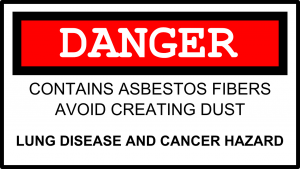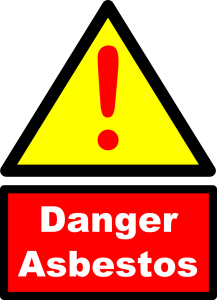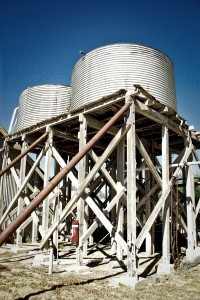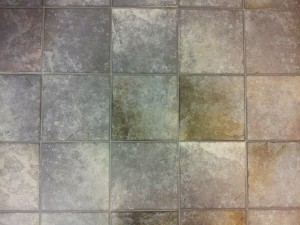Asbestos is an extremely useful material, unfortunately, it is also extremely dangerous. As a non flammable insulator, it was used in fire curtains, home insulation, as ironing stands, for automobile brakes, in ceiling decoration, house sidings and so many more places. It was also used in cigarette filters! Both government and private industry promoted the use of asbestos, even though they may already have known at the time that it was dangerous and caused cancer. Below is one of the promotional films made many years ago before the dangers of asbestos were publicly known.
Category: Historic
Historic uses of asbestos
Sources Of Asbestos in Homes
Where To Find Asbestos In The Home
It’s often surprising just where exactly asbestos can be found in older homes and what needs to be done to ensure a safe asbestos clean up. The best route is to bring in the experts. Qualified asbestos removal firms will have trained staff, who will know where exactly to look for possible uses, such as sidings, floor tiles, asbestos duct or ductwork insulation and boiler areas for instance. They will also be trained to use the correct methods, such as taping off areas with asbestos danger tape, using asbestos cleaning cloths and disposal bags or they may possibly recommend asbestos encapsulation methods for areas where the material does not need removal and is not friable but where work is needed to ensure any asbestos cannot be accidentally released.
The Health and Safety Executive in the UK has produced an image that shows some (not all) of the possible places to find asbestos in the home. The numbering guide can be found on their page. The picture is linked to the page it comes from.
There is an old film available that shows many of the areas where asbestos can be found in an older house. Warning: the video is actually called “how to safely remove asbestos” but what it really does is show you where asbestos is located. If you are interested in watching to see how many ways asbestos was used in older houses, then check out the asbestos documentary below.
This page contains public sector information published by the Health and Safety Executive and licensed under the Open Government Licence
Asbestos Definition
Asbestos Definition
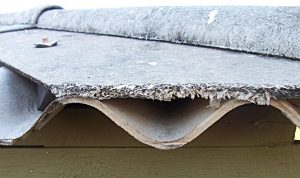
Billbeee at en.wikipedia [GFDL (http://www.gnu.org/copyleft/fdl.html), CC-BY-SA-3.0 (http://creativecommons.org/licenses/by-sa/3.0/)
or CC BY 2.5 (http://creativecommons.org/licenses/by/2.5)], via Wikimedia Commons
Any material that contains more than one percent of asbestos is defined as Asbestos Containing Material (ACM). This can include insulation on pipework and boilers, fireproofing that has been sprayed or troweled on, sound proofing material such as acoustic plaster, floor, ceiling and wall tiles and linoleum, roofing materials, ceiling plaster, fuse box insulation and gasket materials.
Although in nature asbestos fibers are microscopic, they are resistant to fire and most chemical breakdown and reactions and they are extremely durable. These properties that asbestos offers are the reasons which for many years its use was supported in a number of different industrial and commercial capacities.
The resistance to heat of asbestos combined with its strength allowed it to become the choice material for various products, including cement compounds, automotive parts, roofing shingles, ceiling materials, and textile products. As exposure to this toxic material has now been scientifically and directly linked to a variety of respiratory and lung conditions such as mesothelioma, its use and removal is now strictly regulated.
Why Is Asbestos Hazardous?
There was a sharp decline in the use of asbestos in the late 1970s when it started to become evident that it was posing a threat to the health and safety of humans. Nowadays, asbestos has been classified as a known human carcinogen. The durability factor of asbestos which made it so desirable to manufacturers is in fact what makes it so extremely hazardous.
Asbestos fibers are roughly around .02 the diameter of a human hair, they are microscopic and as such they are inhaled easily. Once the fibers have been inhaled, they cling to the respiratory system; this includes the inner cavity tissue and the lining of the lungs. Because asbestos fibers are typically quite rigid; they lodge in the respiratory system and are not easily broken down by the body or expelled.
In some capacity, due to the extensive use of the mineral in industrial, commercial and even domestic products, hundreds and thousands of people were exposed to it. There is not a single type of asbestos that is safe nor is there a safe level of exposure. Nearly everyone who has ever been exposed to asbestos is potentially at risk of respiratory health complications that are quite serious. This can include people living at home or working in office jobs where asbestos has been exposed, perhaps during maintenance or renovations, allowing fibers to escape to the air.
Who Is At Risk Of Being Exposed to Asbestos?
There are hundreds of occupations that were affected by asbestos exposure. Some of the industries in which asbestos was especially prevalent include but are not limited to commercial product manufacturing, construction, shipbuilding, and power plants. Prior to 1980, workers employed in these industries likely came into contact with asbestos products. Also at high risk for having been exposed to asbestos are military veterans.
Although exposure to asbestos is hazardous, not every asbestos product is inherently hazardous. Because asbestos has to be inhaled to form a health risk, a true hazard is represented only by asbestos found in the air supply, a condition that is known as friable, or loose asbestos fibers. Stable asbestos compounds, such as tiles, intact cement, or other products, generally are not an immediate hazard.
Mesothelioma is a type of lung cancer linked to asbestos exposure. If you believe that you have been exposed to asbestos in some way or another, it is important to report it and seek immediate medical evaluation. If you are, or think you are, suffering from this, you may find some help on mesothelioma and symptoms on this site (opens on a different site).
Asbestos Curtains
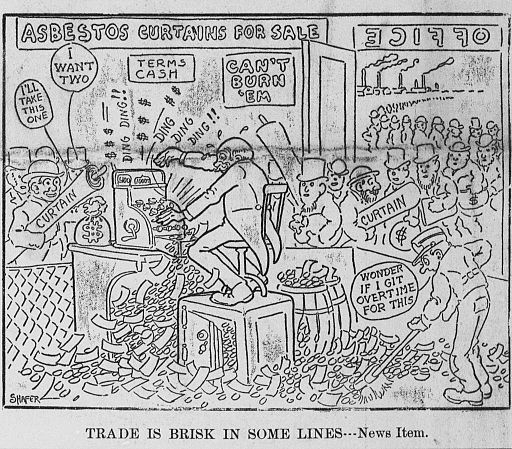
Claude Shafer [Public domain], via Wikimedia Commons
Theatre Fire
The cartoon above was drawn following the Iroquois Theater fire, which took place December 30, 1903, in Chicago, Illinois and in which at least 602 people died. It was the deadliest theater fire ever in the US.
The theater was billed as fireproof, however, the fire department had toured it before opening and found it deficient, as had others, including the use of wood in the construction and a lack of fire exits but they were unable to stop it opening and operating.
A fire started backstage, during an afternoon performance when a cloth curtain went on fire, and flames climbed high above the stage, igniting canvas stage scenery. The “fireproof” curtain was blocked from dropping by the construction and was later found not to be fireproof anyway, containing only a small amount of asbestos!
The audience included many women and children and the only way out was down a staircase that was blocked by the many people trying to use it at the same time. As the actors and stage hands leaving at the back managed to escape, their escape doors let in blasts of wind that fanned the flames at the front, creating a fireball that incinerated those still trapped in the upper levels of the theater.
The tragedy was the impulse for many health and safety laws on theater safety.
Building Consultants Asbestos Fine
Building consultants, Watts Group PLC were prosecuted and fined £30,000, plus costs in January 2016 for health and safety breaches that allowed two construction workers to be exposed to asbestos.
The group was the asbestos removal project manager and surveyed for asbestos prior to replacement of doors in a service duct below a hospital. They drew up plans showing where asbestos was present and where it had been removed. The survey, however was defective and asbestos in poor condition was present throughout the area but not shown on the plans.
It is vital to health and also to comply with legal requirements that the correct type of asbestos survey is carried out systematically and results recorded. Information on where to find asbestos can be found on the HSE website.
Persons responsible for managing premises such as shops or industrial units have a duty to manage asbestos. You can find out more about that at HSENI’s ‘Duty to manage asbestos’ page
Asbestos found in Children’s Crayons
Some crayons, imported from China, have been found to contain traces of Asbestos!
They are not being recalled because the asbestos is set in wax and is thus not thought to be a problem for inhalation. However, experts at UKATA say that any level of asbestos present in a children’s product, is unacceptable because asbestos presents very real dangers of cancer. And while the asbestos may be set in wax, reducing dangers of inhalation, many children put crayons in their mouths and parents may not find this a problem as they believe the wax is non-toxic.
One company has already pulled the crayons, (some marketed with images from films such as Frozen and TV programmes like Peppa Pig) from its shelves, bringing praise for acting responsibly.
Sources of Asbestos Hazards
Where can Asbestos be Found? Potential Sources of Asbestos
Do you have any idea where asbestos is lurking? Though regulations have become quite strict, there are still some residential and commercial sources of asbestos.
Asbestos products have gradually been disappearing but they were widely used before the introduction of bans on the use of this material and it’s still possible to find asbestos in older constructions.
Identifying and getting rid of asbestos is essential because of the numerous health risks associated to it. Here are some of the most common sources of asbestos that you could come across.
Asbestos Cement
Asbestos cement roofs and flues were common in the past. Asbestos cement roofs can be commonly found on farms and commercial properties.
Sometimes, asbestos can also be discovered in the roofs of sheds or garages. Asbestos cement flues were common in boiler systems, air conditioning and ventilation. These were typical for both commercial and residential developments.
Asbestos cement was sometimes used in the construction of water tanks, as well. Properties constructed prior to the 1980s could potentially have a water tank made of this material.
Sealants
Until the 1980s, asbestos was frequently used as a sealant around windows and doors. Its insulating properties made the material a really common pick in both residential and commercial buildings.
Asbestos is also heat-resistant, which is why the material could be found as a sealant in old furnaces. Cleaning older furnaces could potentially be a dangerous activity because it may release the asbestos particles in the air. Figuring out whether the material was used for insulation prior to getting started with cleaning will be essential.
Wallpaper
Yes, asbestos could be found in something as innocent as old wallpaper.
Many vinyl papers made prior to the 1980s contain asbestos. Removing those and replacing them with something a bit more innovative could be a downright dangerous task. Intact wallpaper isn’t dangerous but trying to tear it from the walls will release the asbestos fibers in the air.
If you’re looking at an older house that’s in need of wallpaper removal, you should first talk to a professional about it. Experts in the field will test the wallpaper and the adhesive for asbestos, after which they’ll recommend the best removal procedure.
Textured Coatings
In the past, textured coatings were used as a decorative finish. They were popular for use on the walls and the ceilings of buildings.
Depending on the particular decorative effect that was sought, such textured coatings could have peaks or different patterns. The original color of the material is white. It can easily be painted over.
If undisturbed, textured coatings containing asbestos are not dangerous. Still, it’s essential to get those identified and assess the risk. If you plan to carry out a renovation project in the future that involves tearing down the coating, you’ll need professional assistance.
Floor Covers
Vinyl sheets and rubber floor covers often contained asbestos fibers in the past. These
materials were “tight” and heavy because of the presence of asbestos fibers. Even the adhesive that was used for such floor covers contained some amount of asbestos.
It’s a general assumption that floor covers and tiles installed prior to the 1980s contain some amount of asbestos.
The amount of asbestos in flooring is generally small and older floors can be easily covered with new materials. If the old flooring is to be removed, however, the danger will have to be evaluated in advance.
How to Check for Asbestos and Identify It
A visual inspection of your home, office or other commercial property is the only one you should be undertaking. Don’t disturb the material that could potentially be a source of asbestos. Inhaling the fibers will increase the risk of experiencing asbestos-related health problems, so be careful about it.
Asbestos is a fibrous material and any old insulation fibers could potentially contain it. Requesting the assistance of a certified professional is the best idea in such situations. The professional will take a small sample from the questionable material and lab exams will be performed to determine whether there is asbestos.
Depending on the location of the material and its condition, you’ll have to determine whether to remove it or leave it undisturbed. Asbestos products in good condition will not release dangerous fibers. If any damage has been incurred, however, safe removal will be the best strategy.
Any older building comes with the risk of asbestos being present in the construction materials. Since the health risks associated with asbestos are serious, it’s important to identify it and assess the material’s condition early enough. Asbestos-containing materials may be isolated, repaired or removed. Whichever option you choose, it’s crucial to pick a certified professional for the execution of the task.

